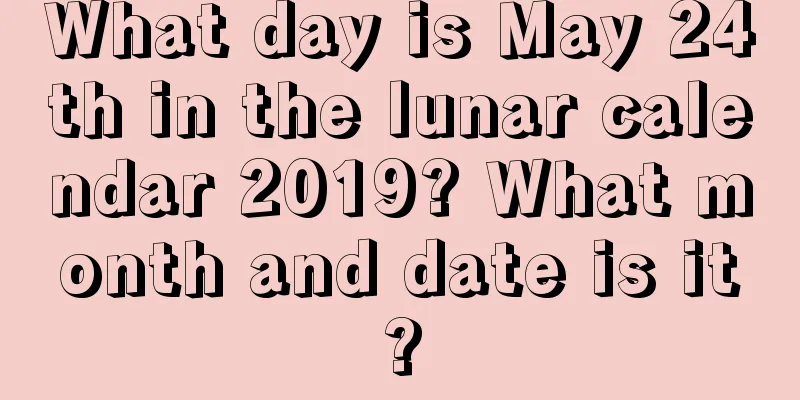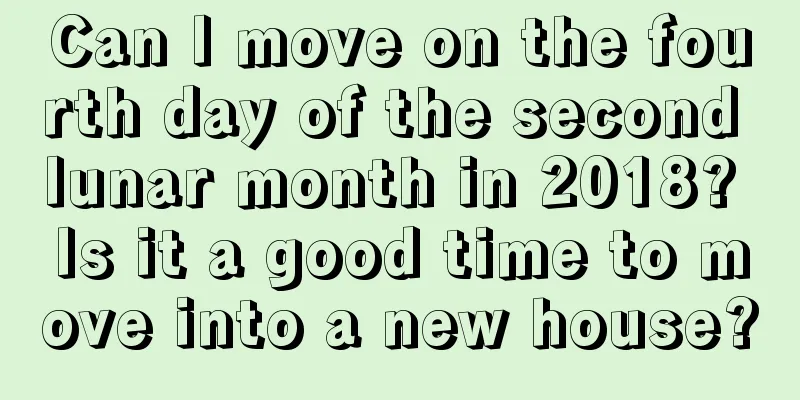What does the Spring Equinox mean? What activities will be held during the Spring Equinox in 2019?

What does the Spring Equinox mean? The Spring Equinox was a festival and sacrificial day in ancient times. So what folk activities are there on the Spring Equinox in 2019? Shuimoxiansheng.com provides you with more content related to the second month of the lunar calendar in 2019. Everyone is welcome to learn about it together!What does the Spring Equinox mean?Around March 20th of the Gregorian calendar every year, when the sun is at 0° of ecliptic longitude (the vernal equinox), it is the vernal equinox. On this day, the sun almost directly shines on the earth's equator, and the day and night are almost equal everywhere in the world . In ancient times, it was also called "the middle of the day", "the difference between day and night", and "the moon of mid-spring". "The History of Ming Dynasty·Calendar 1" said: "The equinox is the point where the ecliptic and the red intersect. When the sun reaches this point, the day and night are equal." Therefore, the significance of the vernal equinox is, firstly, that the day and night are equal in one day, 12 hours each; secondly, in ancient times, the spring season lasted from the beginning of spring to the beginning of summer, and the vernal equinox is in the middle of the three months of spring, dividing the spring season equally."Collection of Explanations of the Seventy-two Seasons in the Lunar Calendar" states: "In the middle of February (in the Xia calendar), fen means half, which is half of the ninety days, so it is called fen. Qiu has the same meaning." Dong Zhongshu of the Han Dynasty wrote in "Spring and Autumn Annals: Yin and Yang: The In and Out, Up and Down": "In the middle of spring, the sun is in the east and the moon is in the west. This is called the Spring Equinox. The Spring Equinox is when the sun and the moon are half and half, so the day and night are equal and the cold and heat are balanced." The corresponding phenological phenomenon in the ancient Yellow River Basin was "when the black bird arrives, thunder sounds and lightning begins" (see "Nongsang Tongjue"). At this time, overwintering crops in most parts of my country enter the spring growth stage. A folk proverb in central China goes, "On the Spring Equinox, the wheat starts to grow, and every moment of it is worth a thousand gold coins." The Spring Equinox is also a traditional festival. In the Zhou Dynasty, there were festival ceremonies on the Spring Equinox. "Jingchu Sui Shi Ji" by Liang Zonghuan of the Southern Dynasties recorded: "On the Spring Equinox, people plant fire-preventing grass on the roof. There is a bird like a crow, which crows before the rooster, and the people wait for this bird to enter the fields, which is taken as an omen." In the Ming Dynasty, trees were planted on this day in Zibo, Shandong Province, and spring wine was made. The Wenshui County Annals states: "On the Spring Equinox, people brew wine and mix cool food, and transplant flowers and trees." In ancient China, the Spring Equinox was divided into three stages: "The first stage is the arrival of the Yuan bird; the second stage is the sound of thunder; the third stage is the beginning of lightning." This means that after the Spring Equinox, swallows will fly from the south, and there will be thunder and lightning in the sky when it rains. The Spring Equinox is recorded in the ancient Chinese calendar as: "Three days before the Spring Equinox, the sun enters the equator." What activities are there during the Spring Equinox in 2019?1. Flying kites: The vernal equinox is a good time for children to fly kites. Especially on the day of the Spring Equinox. Even the adults get involved. There are many types of kites, including the Wang-shaped kite, the silver carp kite, the squinting moth kite, the thunder worm kite, and the moonlight kite. The biggest ones are two meters high, and the smallest ones are two or three feet high. There are kites for sale in the market, most of which are relatively small and suitable for children to play with, but most are made by themselves and are larger. When flying them, people compete with each other to see who can fly the highest.2. Standing eggs on the Spring Equinox Standing eggs on the Spring Equinox is a folk tradition in China. According to historical records, the tradition of standing eggs on the Spring Equinox originated in China 4,000 years ago to celebrate the arrival of spring. On the day of the Spring Equinox, people choose a smooth and symmetrical fresh egg that has been laid just four or five days ago, and carefully place it upright on the table. Although there are many failures, there are also many successes. The Spring Equinox becomes the best time to play the egg-standing game, hence the saying "When the Spring Equinox comes, the eggs are pretty." The upright egg looks so beautiful. According to relevant information, the reason why eggs are easy to stand upright on the day of the Spring Equinox is not only a matter of skill, but also has many scientific reasons. Firstly, the vernal equinox is the day when the day and night are of equal length in the northern and southern hemispheres. The earth's axis, which is tilted at 66.5 degrees, and the orbital plane of the earth's revolution around the sun are in a state of relative balance of forces, which is conducive to standing an egg upright. 3. Sending the Spring Ox The Spring Equinox is about to arrive, and at that time people will send pictures of the Spring Ox to every household. The picture is made of red or yellow paper with the lunar calendar dates of the whole year printed on it, as well as a picture of a farmer plowing the fields. It is called the "Spring Ox Picture". The people who sent the pictures were all folk singers who were good at speaking. They mainly talked about spring ploughing and auspiciousness in accordance with the farming season. Every time they went to a house, they would be inspired by the scene and say whatever they saw, until the owner was happy and gave them money. Although the words come out casually, every sentence is rhythmic and pleasant to the ear. Commonly known as "Shuochun", people who talk about spring are called "Chunguan". 4. Folk festivals for worshipping gods before and after the Spring Equinox include the birthday of Kaizhang Shengwang on February 15th: Kaizhang Shengwang, also known as "Chen Shengwang", was Chen Yuanguang, a military scholar in the Tang Dynasty. He made great contributions to Zhangzhou and became the patron saint of Zhangzhou after his death. February 19th is the birthday of Guanyin Bodhisattva. On every birthday, many believers eat vegetarian food and go to various Guanyin temples to worship. February 25th is the Sanshan King Memorial Day: The Sanshan King refers to the mountain gods of Dushan, Mingshan and Jinshan in Jieyang County, Chaozhou Prefecture, Guangdong Province. In the early years, they were regarded as patron saints by Chaozhou Hakka immigrants, so their believers are mainly Hakka people. 5. Spring Festival: On the Spring Equinox in February, people start sweeping tombs and worshipping ancestors, which is also called the Spring Festival. Before tomb sweeping, a grand ceremony of ancestor worship is held in the ancestral hall, with pigs and sheep being slaughtered, drummers playing music, ritual students reading sacrificial texts, and leading the three offerings ceremony. When tomb sweeping begins on the Spring Equinox, the first things people do are to sweep and offer sacrifices to the tombs of the founding ancestors and distant ancestors. The entire clan and the entire village are mobilized, and the procession is large, with often hundreds or even thousands of people. After sweeping the tombs of the founding ancestor and distant ancestors, each room will then sweep and offer sacrifices to the tombs of their ancestors, and finally each family will sweep and offer sacrifices to the family's private tomb. In most Hakka areas, spring ancestor worship and tomb sweeping begin at the Spring Equinox or earlier and are completed by Qingming Festival at the latest. There is a saying in various places that the tomb doors will be closed after Qingming Festival and the heroic spirits of the ancestors will no longer be able to benefit from it. As the saying goes, "A good fate is not as good as good luck." A person's destiny is already determined, and the only thing that can be controlled is his or her "luck." Unexpected changes in the world may happen at any time, so use Mr. Shui Mo's [Premium Calculation] function to learn more about your fortune in 2019! |
<<: Introduction to the Spring Equinox, what is the origin of the Spring Equinox?
>>: When is the Spring Equinox in 2019? What is taboo during the Spring Equinox?
Recommend
Is May 17th of the lunar calendar 2021 a good day? Can we offer sacrifices to our ancestors?
It is necessary to choose a suitable time to worsh...
Query the location of the God of Wealth on the 24th day of the fourth lunar month in 2019
If you want to know more about the dates in April...
Is the fate of a baby girl born on August 18, 2018 in the lunar calendar good? What's your personality like?
Every year is different, so the eight characters a...
The location of the God of Wealth on the 26th day of the 12th lunar month in 2020
An overview of the God of Wealth's location o...
What are the auspicious days for starting renovation work in November of the lunar calendar in 2021?
Auspicious days bring good luck to things. In orde...
Is it a good idea to open a new store on July 1, 2019, Party Founding Day? How to check the lunar calendar for an auspicious opening date?
Introduction: Opening a business is also an import...
Is August 17, 2020 suitable for worshipping the dead? Check the lucky position of the God of Wealth today, October 3!
Introduction: It is very important to choose an au...
There are some tips for raising fish at home, this is the right way to raise fish!
Introduction: There is a saying in Feng Shui that ...
Can I burn incense and pray on the eighth day of the seventh lunar month in 2022?
Can I burn incense and pray on the eighth day of t...
What activities are there on the day of the Minor Cold? Is Minor Cold the coldest time of the year?
Introduction: Minor Cold is one of the 24 solar te...
Is the day of Great Heat in 2017 a good day? Is it okay to renovate the house?
Introduction: Daily work and study bring fatigue t...
What is the date of April 15th in the lunar calendar in 2019? What day is it?
The beauty of April on earth has faded, and the p...
Is the Summer Solstice on June 21, 2019 an auspicious day? What is the difference in sunshine time between the Summer Solstice and the Winter Solstice?
Introduction: The summer solstice is one of the 24...
What is the fate of a boy born on April 25th of the lunar calendar in 2019?
In numerology, the eight characters of birth are t...
Why do we eat spring vegetables during the Spring Equinox? Is there any festive meaning behind it?
Introduction: The Spring Equinox is one of the 24 ...









